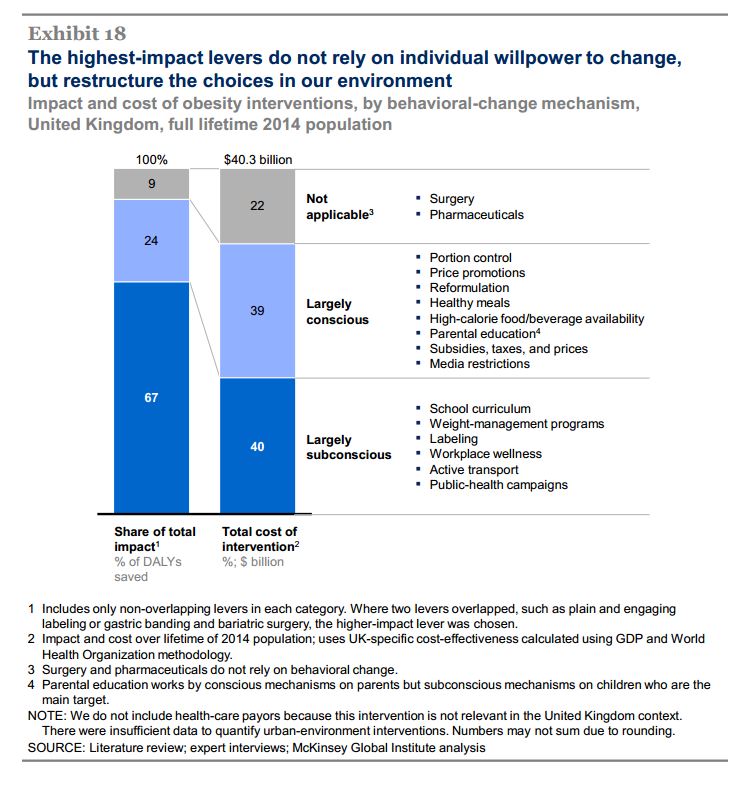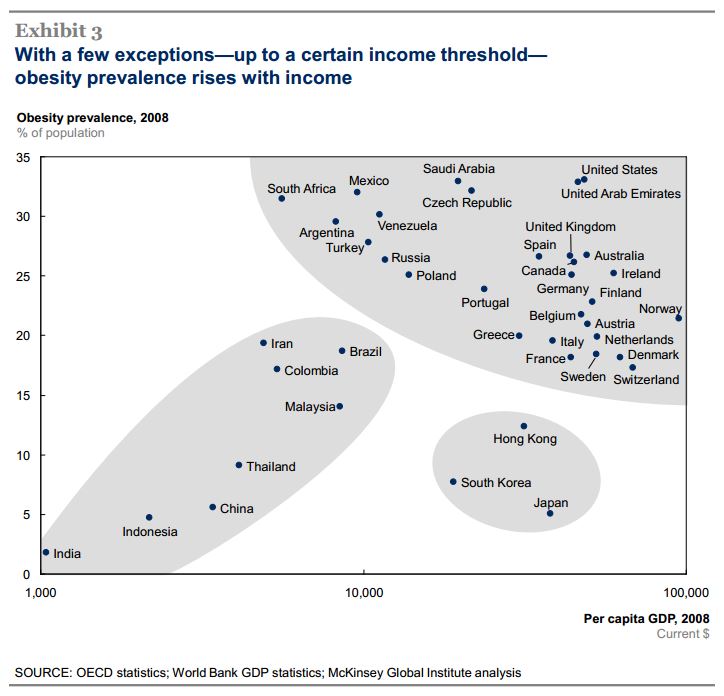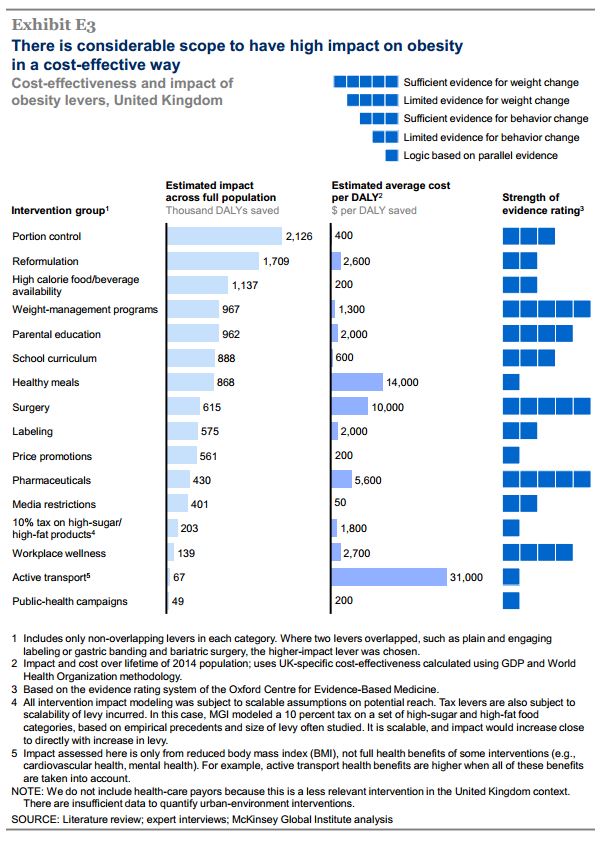“The conscience and intelligent manipulation of the masses is an important element in democratic society. Those who manipulate this unseen mechanism constitute an invisible government that represents the true ruling power of our country. It is they who pull the wires that control the public mind.” Edward Bernaise (Sigmund Freud’s Cousin, Founder of modern PR)
http://www.abc.net.au/radionational/programs/ockhamsrazor/limits-to-growth/6088808
Limits to growth
Australian writer Dr Kerryn Higgs has written a book called Collision Course – Endless Growth On A Finite Planet, in which she examines how society’s commitment to growth has marginalized scientific findings on the limit of growth, calling them bogus predictions of imminent doom.
Transcript
Robyn Williams: Growth or no growth? You may have heard Dick Smith on Breakfasta couple of weeks ago saying that unlimited growth is impossible and we must do something else. But what? There is, of course, a way of improving what we do more efficiently and stopping waste. Peter Newman from Perth gave an example on Late Night Live late last year: If we used trains instead of trucks for freight, it would halve the costs and save many, many lives. We don’t do it because we always do what we’ve always done. Kerryn Higgs, who’s with the University of Tasmania, has just brought out a book called Collision Course – Endless Growth on a Finite Planet, published by MIT Press and she has recently been appointed a Fellow of the International Centre of the Club of Rome.
Kerryn Higgs: I came across The Limits to Growth quite by accident in 1972, just when it was published. It was commissioned by the Club of Rome and written by a team of researchers at MIT, led by Donella and Dennis Meadows. The book changed the way I thought about Nature, people, history, everything. It persuaded me that physics matters, and that the idea of ever-expanding economic growth is a delusion. Up to then, I was a mainstream humanities person, history being my main discipline, and writing my passion. I did grow up in the countryside and loved the natural world, but I had no real intuition of an impending environmental crisis. And here was this little book suggesting that if we carried on with our exponential expansion, our system would collapse at some point in the middle of the 21st century.
Although galloping economic growth already seemed normal to most younger people living in the developed world in 1972, the growth that took off after WW2 was not normal. It is absolutely unprecedented in all of history. Nothing like it has ever occurred before: large and rapidly growing populations, accelerating industrialisation, expanding production of every kind. All new. The Meadows team found that we could avoid collapse if we slowed down the physical expansion of the economy. But this would mean two very difficult changes— slowing human population growth and slowing the entire cycle of physical production from material extraction through to the disposal of waste. The book was persuasive to me and I expected its message to have an impact on human affairs. But as the years rolled by, it seemed there was very little—and then, even less. In fact, I gradually became aware that most people thought “the Club of Rome got it wrong” and scorned the book as an ignorant tract from “doomsters”, an especially common view among economists. I want to point out, though, that recent research from Melbourne University’s Graham Turner, shows that the Meadows team did not get it wrong. Their projections for what would happen if we carried on business as usual tally almost exactly with what has actually occurred in the 40 years since 1972.
But while scientists from Rachel Carson onwards sounded alarm about numerous problems associated with growth, this was not the case in our governments, bureaucracies, and in public debate, where economic growth was gradually being entrenched as the central objective of collective human effort. This really puzzled me.
How come the Club of Rome got such a terrible press?
How did scientists lose credibility? When I was young, science was almost a god. A few decades later, scientists were being flippantly brushed aside.
How did economists displace scientists as the crucial policy advisors and the architects of public debate, setting the criteria for policy decisions?
How did economic growth become accepted as the only solution to virtually all social problems—unemployment, debt and even the environmental damage growth was causing?
And how did ever-increasing income and consumption become the meaning of life, at least for us in the rich world? It was not the meaning of life when I was young.
Answering these questions took me back through human history. A few developments were especially decisive.
Around 1900, the modern corporation emerged. Over just a decade or two, many of the current transnationals came into being in the US (with names like Coca Cola, Alcoa and DuPont). International Harvester amalgamated 85% of US farm machinery into one corporation in just a few years. Adam Smith’s free enterprise economy was being transformed into something very different. A process of perpetual consolidation followed and by now, frighteningly few corporations control the majority of world trade and revenue, giving them colossal power. The new corporations of the early 20thcentury banded together into industry associations and business councils like the immensely influential US Chamber of Commerce, which was formed out of local chambers from across the country in 1912. These organisations exploited the newly emerging Public Relations industry, launching a barrage of private enterprise propaganda, uninterrupted for more than a century, and still very healthy today. Peabody coal, for example, recently signed up one of the world’s PR giants, Burson-Marsteller, for a PR campaign to convince leaders that coal is the solution to poverty.
Back in 1910 universal suffrage threatened the customary dominance of the business classes, and PR was an excellent solution. If workers were going to vote, they’d need the right advice. No-one expressed it better than Edward Bernays, Freud’s nephew, who is credited with founding the PR industry. Bernays was candid:
The conscious and intelligent manipulation of the… masses is an important element in democratic society (he wrote). Those who manipulate this unseen mechanism … constitute an invisible government which is the true ruling power of our country… It is they who pull the wires which control the public mind.
PR became an essential tool for business to consolidate its power right through the century, culminating in the 1970s project to “litter the world with free market think tanks”. By 2013, there were nearly 7,000 of these, all over the world; the vast majority were conservative, free market advocates, many on the libertarian fringe, and financed by big business. They cultivate a studied appearance of independence, though one think tank vice-president came clean. “There is no such thing as a disinterested think tanker,” he said. “Somebody always builds the tank, and it’s usually not Santa Claus or the Tooth Fairy.” Funding think tanks is always about “shaping and reshaping the climate of public opinion”.
Nonetheless, the claim to independence has been so successful that most think tanks have tax-free charity status and their staff constantly feature in the media as if they were independent and peer-reviewed experts.
Another decisive development was the “bigger pie” strategy. Straight after World War 2, governments took on a new role of fostering growth. The emphasis increasingly fell on baking a bigger pie, so the slices could get bigger but the pie would not have to be divided up any more equitably. Growth could function as an alternative to fairness. Thorny problems like world poverty were designated growth problems and leaders in the decolonising world often embraced a growth-oriented version of development, a version that rarely helped their poor majorities. Growth allowed the privileged to maintain and even extend their opulence, while professing to be saving the world from poverty. It’s frequently claimed that growth is lifting millions out of poverty. But, apart from China, this is not really the case. China has indeed decreased the numbers of its extreme poor, though this has been achieved with disastrous environmental decline and increasing inequality.
Meanwhile, progress is patchy elsewhere. After 70 years of economic growth, with the world economy now 8 to 10 times bigger than it was in 1950, there are still 2 and a half billion people living on less than $2 a day, more than a third of the people on earth, and about the same number as in 1981. Growth has not been shared. Underlying the popularity of growth, there’s a great clash of values between mainstream economics and the physical sciences.
Economists see the human economy as the primary system—odd when you consider that the planet’s been here for about 4.6 billion years, and life for something like 3.8 billion. The human era is less than a whisker on this timescale, but for economists Nature is just the extractive sector of their primary system, the economy. For scientists and ecological economists, the primary system is the planet – and it’s self-evidently finite. The human economy with its immense material extraction and vast waste, exists entirely within the earth system. Self-evident as these boundaries might seem, they remain invisible or contested in mainstream economics and are of little concern to politicians or citizens in most countries. Hardly a news bulletin goes by without stories of growth expected, growth threatened, or growth achieved. Growth is the watchword of both major parties here and around the world and remains the accepted solution to poverty, pollution and debt.
And yet, however necessary growth is to our current economic arrangements, and however desirable from the point of view of our expectations of material well-being and comfort, it’s hardly a practical aim if it’s based on a misperception of reality.
While we assume that a high and increasing level of material consumption is normal and desirable, we ignore the peculiarity of our times and the encroaching threats to us and our planet.
We are well into dangerous territory in three areas:
Firstly, species are going extinct 100 to 1000 times faster than the background rate.
Secondly, the nitrogen cycle is completely disrupted. In nature, nitrogen is largely inert in our atmosphere. Today, mainly through making fertiliser, nitrogen is flooding through our rivers, groundwater and continental shelves, fuelling algal blooms that lead to dead zones and fish kills.
And thirdly we are on the way to a very hot planet. Unless we change rapidly in the extremely near future, we risk an increase of 4 degrees Centigrade by 2100. So far, an increase of less than 1 degree is melting the West Antarctic icesheet, glaciers nearly everywhere and even the massive Greenland icecap.
Meanwhile, the rate of carbon dioxide and methane emissions continues to rise. In fact, right through the decade it took to write my book, I was staggered as these emissions defied all protocols and agreements, and rose faster and faster every year, setting a new record in 2013. Four degrees may be a bridge too far, and yet our culture is cheerfully crossing it.
I started out as a student of human history and ended up studying the intersection between human history and natural history. Humans have had local effects for thousands of years but on a global scale, the collision is new. Humans were a flea on the face of the earth for most of our history andit’s probably true to say this is the very first time one species—ours—has taken over the entire planetary system for its own sole use. In human-focused terms, this may seem perfectly reasonable. In planetary terms, it’s weird and completely impractical.
While our best agricultural land, last remnants of white box woodland and the Great Barrier Reef are put at risk for the extraction of gas and coal, which we should aim to stop burning anyway if we want a liveable world, it seems that only citizen revolt is left to counter it.
Let’s hope we succeed.
The ground of our being is at stake.
Robyn Williams: Kerryn Higgs. She’s with the University of Tasmania and her book, published by MIT Press, is called Collision Course – Endless Growth on a Finite Planet.Kerryn has recently been appointed a Fellow of the International Centre of the Club of Rome. Next week I shall introduce the proud Professor who’s just moved into that crumpled brown paper bag designed by Frank Gehry for the University of Technology, Sydney: Roy Green on innovation in Australia and what’s not right.
Guests
- Dr Kerryn Higgs
- Writer
University Associate
University of Tasmania
Fellow of the International Centre of the Club of Rome
Publications
- Title
- Collision Course – Endless Growth On A Finite Planet
- Author
- Kerryn Higgs
- Publisher
- MIT Press
Credits
- Presenter
- Robyn Williams
- Producer
- Brigitte Seega










Comments (3)
Add your comment
Peter Strachan :
12 Feb 2015 6:57:48pm
Thanks Kerryn for outlining the problem and much of its genesis. I find it interesting and frustrating that the obvious solution to our predicament is not mentioned.
If we have a citizens revolt, and I believe that we will eventually come to that, what direction would this revolt take society? Call me old fashioned but I was rather hoping that human intellect could come to a better solution than amorphous revolt against the status quo.
As we look around at existing resource constrained parts of our planet, there are already many visions of that citizens revolt already underway. In the Middle East, in North Africa, Rwanda, in eastern Europe and recently even on our doorstep in The Solomon Islands overpopulation, lack of water and unequal distribution of wealth has led to civil unrest and war, often cloaked in ethnic or religious garb to disguise its true cause.
The solution is already in our hands and its called family planning or contraception if you like.
It is clear that humanity will not be able to avert expansion of societal collapse which has already shown its early phase, while its population numbers keep rising by 80 million pa. Yet there is an unmet desire by women and men to plan and reduce fertility rates. Why are we not providing free choice to those who want this? Why do we continue to promote high birthrates?
Within a decade, population growth rates could be significantly reduced and begin a necessary decline towards a more sustainable level.
But who, apart from Kelvin Thompson is leading the charge? Perhaps more people should know of www.populationparty.org.au?
Reply Alert moderator
Stephen S :
14 Feb 2015 9:43:10am
Gillard and Burke made sure that Labor’s 2011 ‘Sustainable Population Strategy’ contained little factual information and studiously avoided all these pressing questions.
For another generation I fear, the opportunity was lost for a serious national debate about Australia’s rigid postwar policy of sustained high population growth.
Reply Alert moderator
Michael Lardelli :
14 Feb 2015 3:05:22pm
An interesting talk Kerryn. As to the “why” of the current obsession with economic growth, the fault is in us. While, as individuals, we pretend to rationality, humans, as a group, do not act in this way. As the products of evolution by natural selection, we act to maximise reproduction – and pity the person who tries to argue against that! For males, greater wealth gives us more access to females. For females, greater wealth gives higher social status and more probable survival of children.
The fact is that we NEED to believe in economic growth because, without that, we are forced to face up to the falsity of what I call “The Big Lie” – namely that we can all improve our lives / get rich. I wrote an essay on this a few years ago:
http://www.onlineopinion.com.au/view.asp?article=13487&page=0
When people are young they can be idealistic and believe that they can change the world. But that would require that the world be a rational place.
When people are older and more cynical like me they realise that human irrationality is a surging tide against which nothing can stand. It will wash over the world and then retreat. All radically new biological innovations thrown up by Nature are like this. Just like a newly evolved microorganism sweeps through a host population wreaking destruction until it – and the host – evolve to commensality, so the new and incredibly adaptable human species will do the same, although how many thousands of years that will take is unknown.
In the meantime, those of us who understand the inevitability of this process can find some small amount of solace by attempting to change things in our local community to enhance the survival of our own children, friends, neighbours and communities. At the local level, the rational part of one human can sometimes make a difference. And there is no sense in getting depressed about the inevitable.